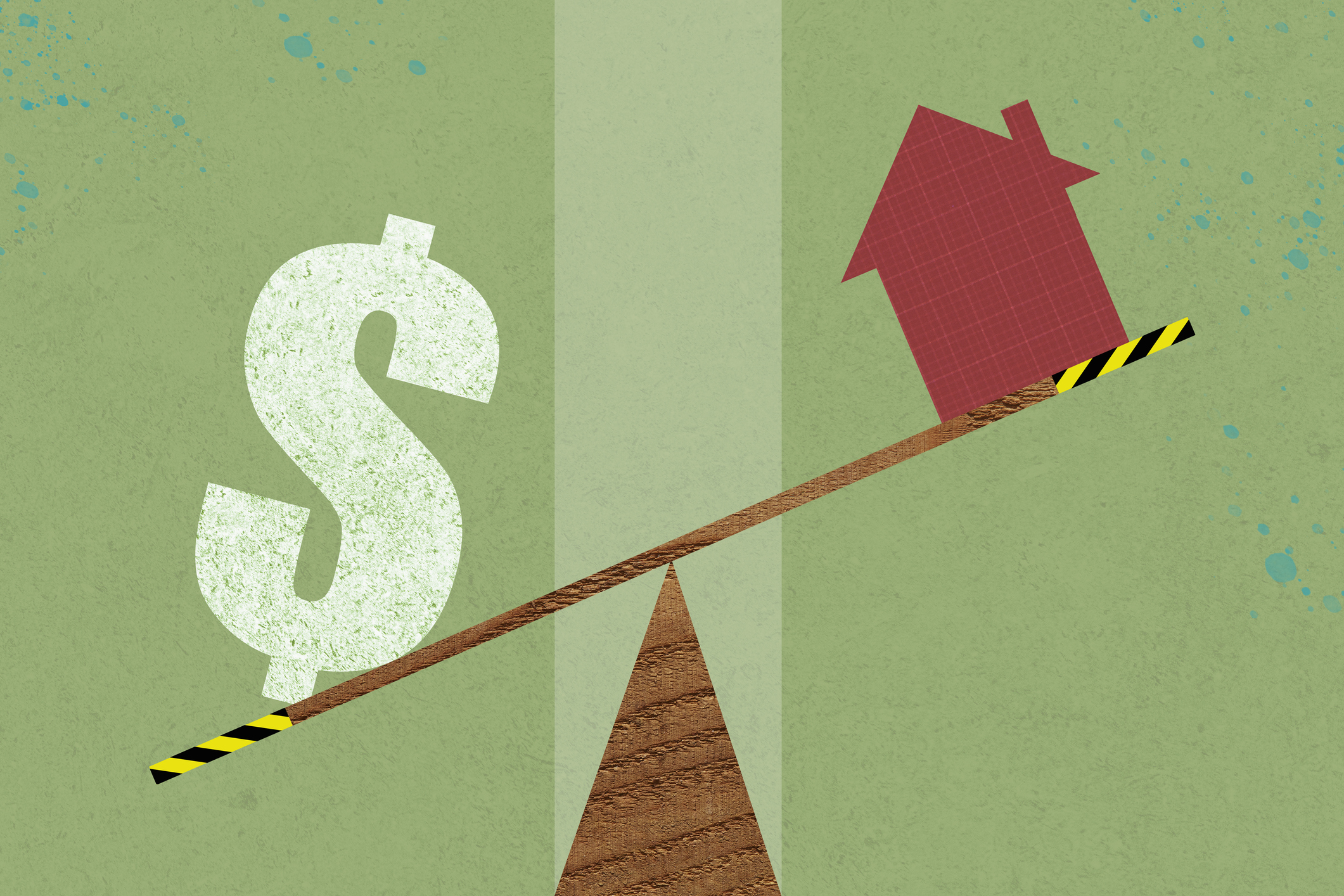The Rules for Making a Medigap Switch
You want to find the best Medicare Medigap plan for your budget. Sometimes that means changing things up.


Donna LeValley
If you're on traditional Medicare, you already know the importance of having a Medigap plan. Medigap is private supplemental insurance that helps fill gaping holes in traditional Medicare's government-administered coverage, like the $1,676 Part A deductible for hospital care or Part B coinsurance for doctor services, typically 20% in addition to this year's $257 Part B deductible.
There are 10 types of Medigap plans, each labeled by a letter from A to N, and every plan with the same letter has identical benefits, even if the insurer is different. But the monthly premiums can be worlds apart. Depending on the insurer, a 65-year-old male in Florida could pay anywhere from $237 to $409 a month for Medigap Plan G, even though the coverage is identical.
That price differential is why it pays to periodically test the market.
From just $107.88 $24.99 for Kiplinger Personal Finance
Become a smarter, better informed investor. Subscribe from just $107.88 $24.99, plus get up to 4 Special Issues

Sign up for Kiplinger’s Free Newsletters
Profit and prosper with the best of expert advice on investing, taxes, retirement, personal finance and more - straight to your e-mail.
Profit and prosper with the best of expert advice - straight to your e-mail.
"I'd say about 50% of people are paying too much for their Medigap plans," Kelly Maxwell, owner of the insurance brokerage Seniors Mutual in Austin, Texas, tells Kiplinger. Hill says insurers often offer attractive, teaser rates to lure newcomers, who have just turned 65 and joined Medicare, before hiking those premiums later on.
Maxwell explains that "companies have lower rates for new enrollees at, say, 75, than current policyholders at 75. This is due to the new customers having to go through underwriting. Because of this, the company knows the new people are healthy — at least healthier compared to existing policyholders that have developed health conditions."
He said that he thinks it is worth it to shop for a new policy every five years or so. If you switch, companies may offer lower rates due to your needing to pass health underwriting to qualify. "That can save people up to $100 per month, just a guess," he said. "But you have to be healthy. Any serious issues, and you can't qualify."
Just how easy is it to switch Medigap plans, and are you still guaranteed coverage the way you were during your initial enrollment?
Rules and restrictions on making a Medigap switch
The good news is you can switch Medigap plans any time and not just during Medicare's annual open enrollment from October 15 to December 7.
The bad news is you aren't guaranteed to qualify for a different plan, including one with the same letter. That guaranteed acceptance, regardless of your health, only lasts for the six months after you turn 65 and first sign up for Medicare Part B.
After that, medical underwriting applies. Most applicants are "likely to qualify for a new plan, unless they have something serious like diabetes or a heart condition," Hill says.
The decision will vary by insurer. You could be denied coverage outright, accepted but charged a higher premium, or face a waiting period of up to six months after you enroll before a preexisting condition is covered. During that time, only Parts A and B would cover the condition, leaving you to foot the bill for any coverage gaps.
A few states, such as California, Connecticut, Massachusetts, New York, and Vermont, make it easier to switch plans and still qualify for coverage. But even these states "usually have limits to ensure that people can only switch to equal or lesser coverage, not to upgrade their coverage," says Louise Norris, an author with medicareresources.org.
You are also guaranteed coverage if you must switch Medigap plans through no fault of your own — for instance, if your insurer goes bankrupt. Otherwise, acceptance isn't guaranteed, so don't cancel an existing policy until you're sure you've qualified for a new one.
Medicare Advantage exceptions

The same Medigap underwriting restrictions also apply if you switch to traditional Medicare from its private insurance alternative, a Medicare Advantage plan, also known as Part C, with three notable exceptions.
If you signed up for an Advantage plan right after joining Medicare, you have a 12-month trial window, and the same is true if you have a Medigap plan and drop it to join Medicare Advantage for the very first time.
During that trial window, "you can leave your Advantage plan, switch to original Medicare, and you'll have limited guaranteed-issue access to Medigap," says Norris. You'll be allowed to switch back to your previous Medigap plan, or if you didn't have one before, sign up for any Medigap plan in your area.
If you move to a place not covered by your Advantage plan or the insurer stops providing coverage, you get another Medigap guaranteed-issue period. But Medigap enrollees who move to another region don't, because Medigap plans offer nationwide coverage.
Outside of these exceptions, Advantage plan members who switch to traditional Medicare and want a Medigap plan will face underwriting. What's more, Advantage policyholders will only be allowed to switch at set times: during traditional Medicare's open enrollment each fall and Medicare Advantage's annual open enrollment from January 1 to March 31.
Related Content
Profit and prosper with the best of Kiplinger's advice on investing, taxes, retirement, personal finance and much more. Delivered daily. Enter your email in the box and click Sign Me Up.

David is a financial freelance writer based out of Delaware. He specializes in making investing, insurance and retirement planning understandable. He has been published in Kiplinger, Forbes and U.S. News, and also writes for clients like American Express, LendingTree and Prudential. He is currently Treasurer for the Financial Writers Society.
Before becoming a writer, David was an insurance salesman and registered representative for New York Life. During that time, he passed both the Series 6 and CFP exams. David graduated from McGill University with degrees in Economics and Finance where he was also captain of the varsity tennis team.
- Donna LeValleyRetirement Writer
-
 Should You Tap Your Home Equity Before 2026?
Should You Tap Your Home Equity Before 2026?As borrowing rates and tax law shifts converge, here's what homeowners need to know before pulling equity out of their home.
-
 What Investors May Face in the New Year: Interview
What Investors May Face in the New Year: InterviewKeith Lerner, the chief market strategist and chief investment officer for Truist Wealth, speaks with Kiplinger.
-
 My adult child was laid off. Can we discuss it without ruining the holidays?
My adult child was laid off. Can we discuss it without ruining the holidays?We asked mental health and financial experts for advice.
-
 My Adult Child Was Laid Off. Can We Discuss It Without Ruining the Holidays?
My Adult Child Was Laid Off. Can We Discuss It Without Ruining the Holidays?We asked mental health and financial experts for advice.
-
 Three Year-End Tax Strategies for Retirees With $2 Million to $10 Million
Three Year-End Tax Strategies for Retirees With $2 Million to $10 MillionTo avoid the OBBB messing up your whole tax strategy, get your Roth conversions and charitable bunching done by year's end.
-
 'Politics' Is a Dirty Word for Some Financial Advisers: 3 Reasons This Financial Planner Vehemently Disagrees
'Politics' Is a Dirty Word for Some Financial Advisers: 3 Reasons This Financial Planner Vehemently DisagreesYour financial plan should be aligned with your values and your politics. If your adviser refuses to talk about them, it's time to go elsewhere.
-
 For a Move Abroad, Choosing a Fiduciary Financial Planner Who Sees Both Sides of the Border Is Critical
For a Move Abroad, Choosing a Fiduciary Financial Planner Who Sees Both Sides of the Border Is CriticalWorking with a cross-border financial planner is essential to integrate tax, estate and visa considerations and avoid costly, unexpected liabilities.
-
 15 Costly Drugs Will Get Medicare Price Cuts in 2027: Will You Save?
15 Costly Drugs Will Get Medicare Price Cuts in 2027: Will You Save?The Centers for Medicare & Medicaid Services extended a safety net to older Americans by announcing significant price reductions on 15 high-cost prescription drugs, effective in 2027.
-
 Average Retirement Income by Age and State
Average Retirement Income by Age and StateWhether you are already retired or just beginning to save, these age and state income averages offer a critical reality check to retirement savings and spending plans.
-
 5 Year-End Moves to Maximize Your 2025 Retirement Savings
5 Year-End Moves to Maximize Your 2025 Retirement SavingsRetirement planning is about consistency, commitment and making the most of every dollar. Here are five high-impact moves to ensure long-term growth.
-
 I'm a Financial Adviser: This Tax Trap Costs High Earners Thousands Each Year
I'm a Financial Adviser: This Tax Trap Costs High Earners Thousands Each YearMutual funds in taxable accounts can quietly erode your returns. More efficient tools, such as ETFs and direct indexing, can help improve after-tax returns.